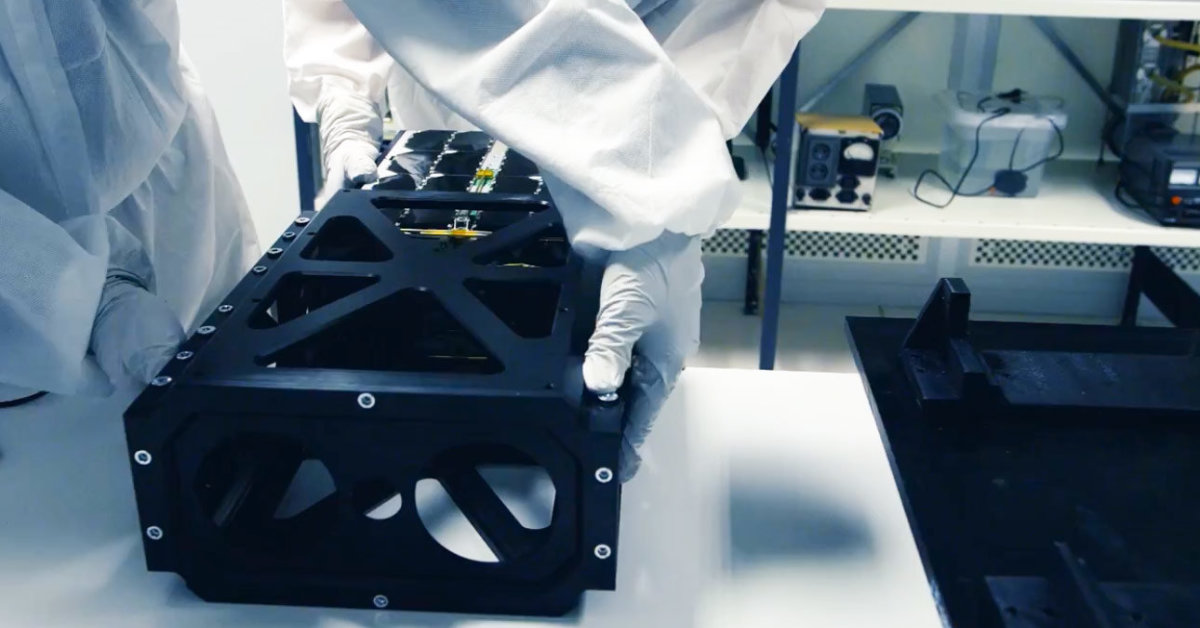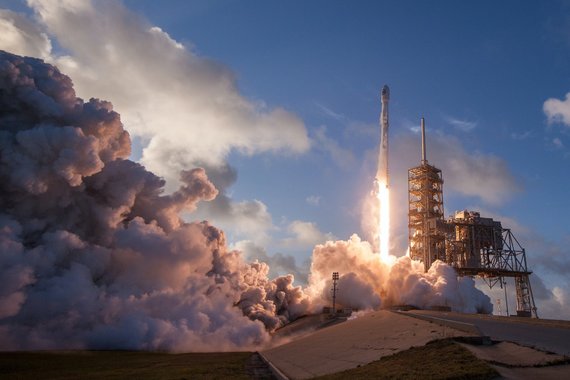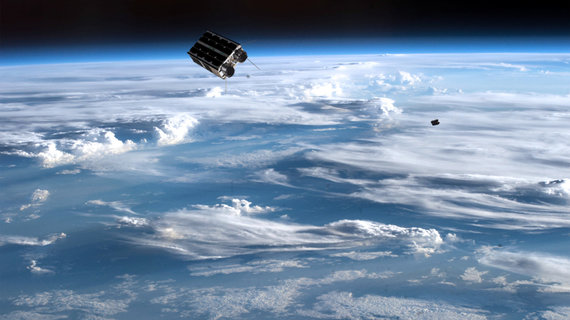
[ad_1]
The satellite created in Lithuania, called Charlie, is being put into orbit in a large company: Falcon 9 carries a total of 93 satellites for various purposes and three additional payloads. This is the third NanoAvionics satellite to launch into space in the last six months.
FalconX’s Transporter 1 mission is the first SmallSat Rideshare mission for SpaceX satellites in 2021. Charlie ascends to the usual home of small satellites, the Synchronous Solar Orbit (SSO), located at an altitude of 600 to 800 km.

Photo Unsplash / SpaceX Falcon 9 rocket launch
Charlie is the first of two NanoAvionics satellites to be commissioned by US radio frequency and data analytics company Aurora Insight. Both satellites are based on the M6P nano satellite platform developed by NanoAvionics, the first standardized platform on the market.
The platform houses the so-called 6 load units (a unit called a cube with a side length of 10 cm and a volume of 1000 cubic centimeters). If necessary, the platform can have a motor that can adjust or change the orbit of the satellite.
Both satellites will be part of a system for collecting and transmitting data to Earth developed by a US company. The second satellite, Bravo, will go into orbit in the first quarter of this year. Charlie and Bravo will also have the most accurate navigation system on the market for small satellites with a built-in star-tracking subsystem.
“It sounds almost ironic, but 2020 was a great year for us. We are also starting new ones, this mission makes us very optimistic. Currently, 90 percent of NanoAvionics contracts cover the full range of services, from the development of satellites , customer cargo integration to satellite launch and in-orbit management. All the missions implemented so far have allowed us to gain a lot of experience and ensure a smooth supply of data and communication from space to our customers, which is the most important in our industry, ”says Vytenis J. Buzas, CEO of NanoAvionics.

Nanoavionics nuotr./Vytenis Buzas
Successful collaboration with Aurora Insight
Aurora Insight will use satellites to monitor the radio spectrum to process mobile and wireless data and television broadcast signals. Aurora technology allows to record the intensity of use of radio frequency bands, pollution, interference and present the information collected in map format, in real time. The tracking data will help mobile or mobile data operators, broadcasters and other radio frequency users to make more efficient use of existing infrastructure or to expand it.
“The satellite will give us access to completely new data on the radio spectrum and help us to better understand the global wireless infrastructure.” The NanoAvionics team is a very professional and efficient partner in the whole process: building satellites successfully, integrating our device and take care of launching and managing them, “says Jennifer Alvarez, CEO of Aurora Insight.
Aurora Insight has developed radio frequency monitoring and measurement devices mounted on vehicles, towers, buildings or other objects. Measurements already underway will be complemented with data from the Bravo and Charlie satellites.
“Adapting the satellites to the needs of our customers is quite easy for us, because we use the principle of modules everywhere: for platforms, subsystems, mechanics and software, as well as for missions and operational operations”, says Vytenis J. Buzas, CEO of NanoAvionics.
An exceptionally successful year
2020 was an exceptionally successful year for NanoAvionics. Although it took NanoAvionics several years to gain the trust of the market, it is certainly not short of offerings from globally recognized companies.
One of the most important and interesting projects is the NASA mission. Under a partnership agreement signed last year with the National Aeronautics and Space Administration (NASA), NanoAvionics will build a 12-unit platform to launch and test NASA’s Advanced Composite Solar Sailing System (ACS3). Enlarged in orbit, the solar sail will cover an area of approximately 74 square meters. These sails are planned to be used in the future on small satellites instead of conventional jet propulsion engines.

Photo by Nanoavionics / NanoAvionics Satellites in space are being developed and built in Lithuania, no newcomers
Last year, NanoAvionics also signed a high-value contract with Sen, a UK company, to develop an ultra high definition (UHD) Earth imaging system to monitor the effects of the planet’s environment, natural disasters. or climate change. A swarm of small satellites will also be used for this purpose. NanoAvionics has committed to developing the first 5 satellites of the swarm, which will be based on a platform of 16 cargo units, which will be developed and manufactured in Vilnius
Additionally, last year, NanoAvionics opened three new offices, one of them in Kaunas, and added new members to the team. And in the United Kingdom (UK), the company moved to a larger facility.
Already this Friday, we invite everyone who wants to see the launch of the Charlie satellite into space together with the NanoAvionics team.
[ad_2]